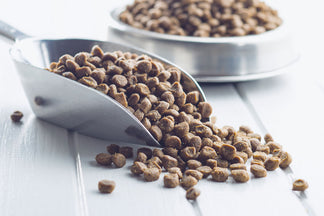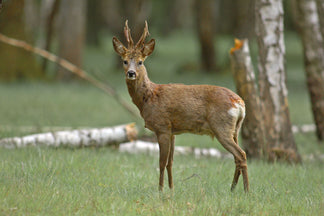We now move to the letter “K” in our ingredient A to Z series and are featuring Kelp as our ingredient of the day.
What is Kelp?
According to Wikipedia, Kelp is a large seaweed belonging to the brown algae family. Kelp grow in ocean “kelp forests”.
Common names for Kelp
The most common name variations for Kelp are seaweed, bull-kelp, and “Laminariales” which is the scientific name.
Why is Kelp included in pet food?
Kelp is added to pet food because it is a good source of the following: 1) minerals and amino acids, 2) iodine which can help support a well functioning glandular system, and 3) fiber.
Common benefits or risks of Kelp
Benefits: There are many benefits of Kelp. Because of its high iodine content, Kelp can help regulate glandular systems for optimal health. Kelp is also high in fiber which can help keep a dog’s digestive tract clean and healthy.
Because Kelp is packed with vitamins and minerals, Kelp is also a low calorie ingredient to ensure a balanced diet. Three and one-half ounces of Kelp are only 43 kcals and contain almost 2 grams of protein, along with B vitamins, Vitamins C, E, and K, and magnesium, sodium, and zinc, among others.
The rich iodine content and high levels of other nutrient minerals and vitamins in Kelp make it an herb of choice for regulating and balancing glandular systems. In particular, pets suffering from hypothyroidism can benefit from the iodine in Kelp. One of the functions of iodine is the stimulation of the thyroid gland.
Risks: Because of Kelp’s high levels of iodine and sodium, pets with hyperthyroid and other thyroid problems or with salt restrictions should not be fed Kelp without veterinarian approval.
As with all seafood products, Kelp can be susceptible to water pollutants.
Miscellaneous facts about Kelp
- There is a body of research that suggests that using Kelp as a supplement can help diabetic people in secreting insulin, thereby lowering the blood sugar levels. Perhaps this could translate to pets, especially cats, who are prone to both Type I and Type II diabetes.
- Alfred J. Plechner, D.V.M, has reported that Kelp can help control fleas.
- Kelp is a fast growing algae and can grow as fast as 1 ½ feet per day.
Sources and further reading
http://en.wikipedia.org/wiki/Kelp



 Food
Food
 Food
Food
 Food
Food
